Some rocks have been “sculpted” by natural superforces, balancing in a position as if they are about to topple, existing for millions of years. The most incredible rocks in the world always attract geologists and curious visitors.
Top 10 Most Balanced Rocks in the World
1. Kummakivi Rock, Finland
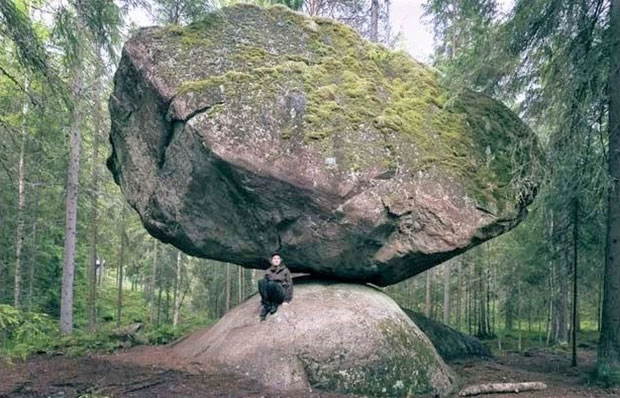
Kummakivi Rock, measuring 7 meters long, balances on top of another rock in Finland. The lower rock has a curved, smooth surface and is embedded in the ground. Surprisingly, there is only a very small point of contact between the two rocks.
According to Finnish folklore, “Hissi,” a type of giant, placed these rocks. Geologists, however, believe that the retreat of glaciers led to the formation of these rocks around 12,000 years ago.
2. Basalt Column, Canada
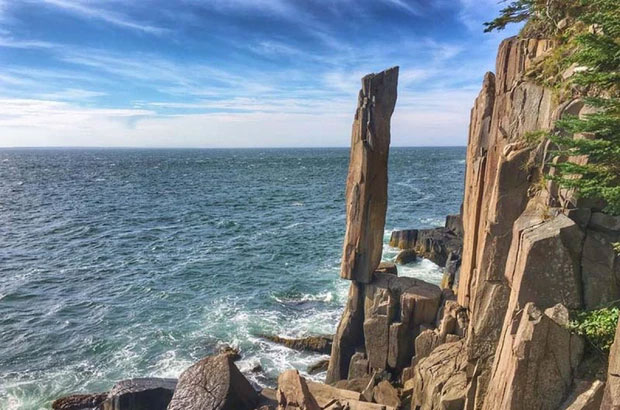
This 9-meter tall vertical basalt column overlooks St. Mary’s Bay in Nova Scotia, Canada. To view this massive rock, visitors must walk a 2.5-kilometer trail and climb 235 steps. Approximately 200 million years ago, during the Triassic period, molten rock formed deep within the Earth and spread across the surface.
This phenomenon split the supercontinent Pangea and opened the Atlantic Ocean. As the hot lava cooled, weathering and erosion formed many columnar basalt structures, similar to the column at St. Mary’s Bay.
3. Sandstone Rock, USA
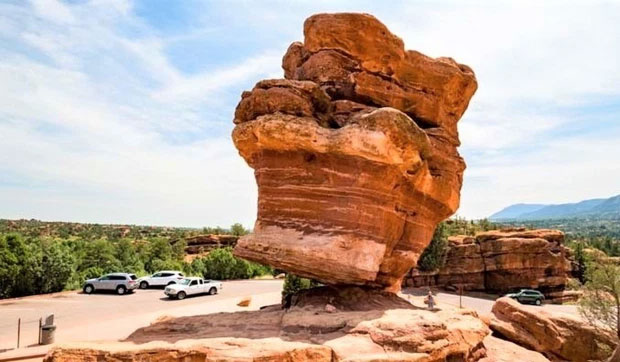
This nearly 290-million-year-old red sandstone rock, weighing about 700 tons, is iconic in the Garden of the Gods in Colorado Springs. Its formation began when a liquid form of sedimentary sandstone erupted from deep within the Earth. In the Garden of the Gods, there are two adjacent rocks that create a natural entrance, welcoming tourists.
The durability of this rock has been tested over time, especially during earthquakes. Researchers have photographed the rock and built 3D models to simulate the necessary vibrations to topple it. The results show that high-intensity earthquakes occur less frequently than previously estimated.
4. Idol Rock, England
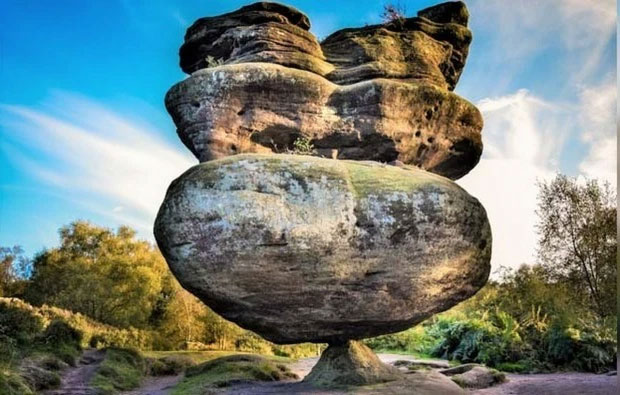
Brimham Rocks is a stunning collection of sandstone formations in North Yorkshire, England. One of these rocks, Idol Rock, also known as the “Druid’s Idol” or “Druid’s Writing Desk,” stands nearly 4.5 meters tall and weighs 200 tons. This colossal structure rests atop a small conical base.
For many years, locals believed this masterpiece was carved by ancient Britons. However, research has proven that it is a natural formation.
5. Krishna’s Butterball, India

This giant rock, 6 meters tall and weighing approximately 250 tons, stands on a 4-meter-high pedestal on a slippery hillside in Tamil Nadu, India. It is part of the “Group of Monuments at Mamallapuram,” recognized as a UNESCO World Heritage Site. The name “Krishna’s Butterball” derives from the Hindu deity Krishna. According to Hindu mythology, Krishna used to steal butter from his mother’s pot, called “Handi.” The shape of this rock resembles “Handi”.
This balancing rock is also known as “Vaanirai Kal” in Tamil, meaning “Rock of the Sky God.” The upper back of the rock has been eroded. Interestingly, the rock maintains a round shape from every angle except the top of the back. In the past, many kings attempted to move the rock but were unsuccessful.
6. Pinnacle Rock, USA
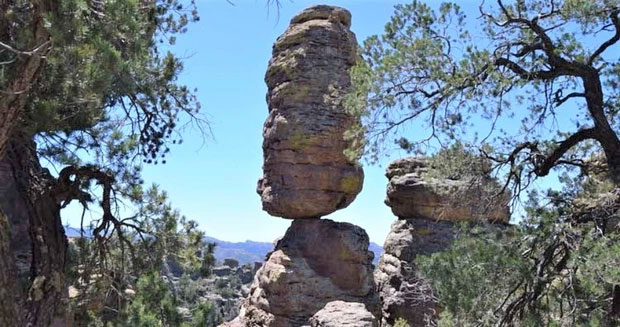
Pinnacle is a massive sandstone rock that juts out above the surrounding terrain in the Chiricahua Mountains, Arizona. It is a popular destination and a favorite photo spot for tourists. About 27 million years ago, a massive volcanic eruption released a thick layer of hot white ash.
This ash then cooled and solidified into a hard crust, creating a nearly 609-meter high volcanic ash formation with high silica and pumice content. Gradually, through erosion, these rocks have transformed into interesting shapes.
7. Arches Rock, USA

Standing 29 meters tall and weighing 3,600 tons, Arches Rock is one of the most captivating “sculptures” in Arches National Park. It is composed of two different types of rock. The upper rock, reddish-pink in color, is Entrada sandstone, while the second type is part of the Carmel formation, made from mudstone.
Mudstone erodes much faster than sandstone. Geologists believe that the softer mudstone base will eventually erode away, and one day, this balanced rock may fall due to erosion. A similar incident occurred in 1975 when a nearby rock called “Chip-Off-the-Old-Block” collapsed.
8. Chiremba Rocks, Zimbabwe
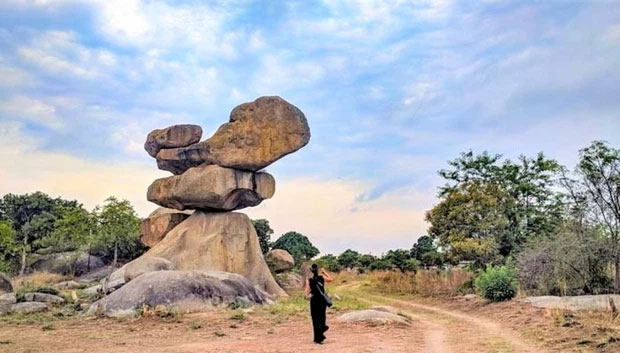
The Chiremba Rocks are massive granite boulders stacked on top of each other, creating fascinating shapes. These rocks were designated as a national monument in 1994. According to the official website of the monument, these rocks symbolize peace and stability in the national economy, as depicted on old Zimbabwean banknotes.
Billion years ago, magma formed in the Earth’s crust and was forced up to the surface. As it cooled slowly and solidified, it formed hard crystalline rocks like granite. The granite at Chiremba is known for its hardness, especially compared to sedimentary rocks like sandstone or mudstone. Due to being significantly softer, erosion will continue, and it is likely that these stones will be worn away.
9. Golden Rock, Myanmar
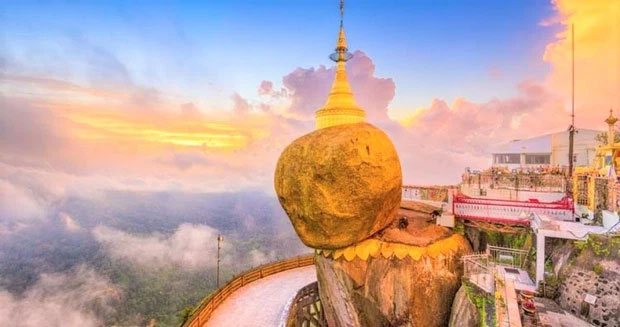
Kyaiktiyo Pagoda, also known as “Golden Rock”, is a famous Buddhist pilgrimage site in Myanmar. The Golden Rock has a diameter of 25 meters and sits on the edge of a 914-meter-high hill; the pagoda on the rock is about 7 meters tall. This massive rock is completely independent of its base, with a very small contact area. The entire rock is covered in gold leaf, creating a captivating and sacred appearance.
A strong belief associated with this temple is that anyone who makes a pilgrimage to the temple three times in a year will be blessed with prosperity, recognition, and respect. According to one of the legends, only women are allowed to push and throw the rock. Therefore, by the temple’s rules, no woman is permitted to touch the rock.
10. Haida Gwaii Rock, Canada
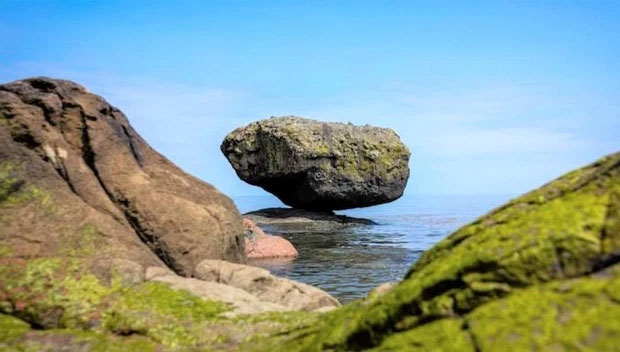
The rock at Haida Gwaii, located right next to the ocean, has attracted tourists for decades. Surprisingly, large waves have not been able to move the rock. Although there is no evidence, it may have formed due to glacial retreat.
According to Dan Gibson, an Associate Professor in the Department of Earth Science at Simon Fraser University, the center of the rock is precisely aligned with the point of contact with the underlying rock, creating a seemingly unbreakable bond. Because the rock is so large and heavy, its mass and center of gravity create a high frictional force that makes it a very stable and difficult object to move. Simple gravity effectively “glues” it to the underlying rock.




















































